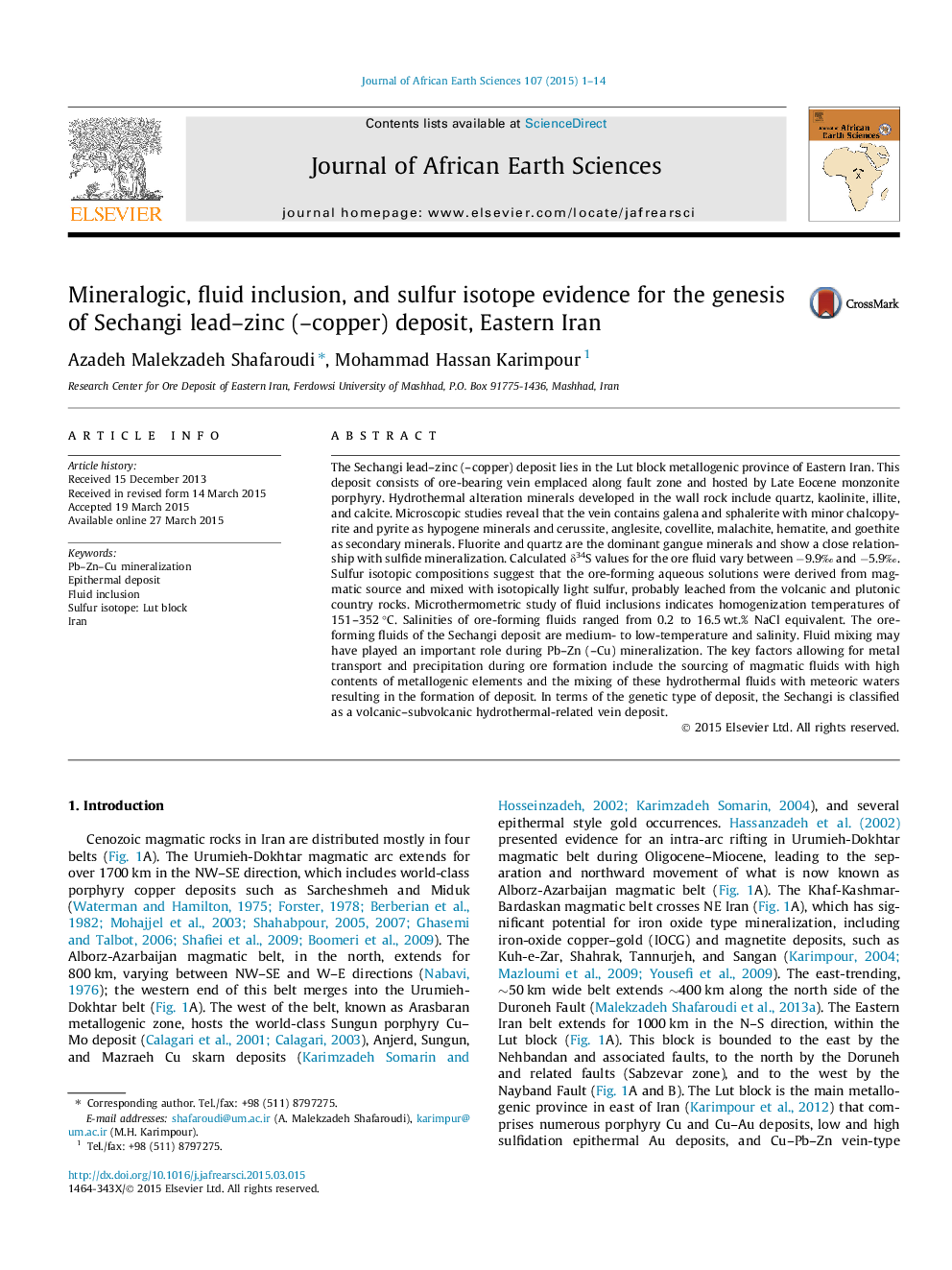| کد مقاله | کد نشریه | سال انتشار | مقاله انگلیسی | نسخه تمام متن |
|---|---|---|---|---|
| 4728569 | 1640200 | 2015 | 14 صفحه PDF | دانلود رایگان |
• We studied genesis of the Sechangi deposit using fluid inclusion and S-isotope data.
• The ore-forming fluids are medium- to low-temperature and salinity.
• The fluids were derived from magmatic source and mixed with isotopically light-S.
• Fluid mixing may have played an important role during Pb–Zn (–Cu) mineralization.
• The Sechangi area is classified as a hydrothermal Pb–Zn (–Cu) vein deposit.
The Sechangi lead–zinc (–copper) deposit lies in the Lut block metallogenic province of Eastern Iran. This deposit consists of ore-bearing vein emplaced along fault zone and hosted by Late Eocene monzonite porphyry. Hydrothermal alteration minerals developed in the wall rock include quartz, kaolinite, illite, and calcite. Microscopic studies reveal that the vein contains galena and sphalerite with minor chalcopyrite and pyrite as hypogene minerals and cerussite, anglesite, covellite, malachite, hematite, and goethite as secondary minerals. Fluorite and quartz are the dominant gangue minerals and show a close relationship with sulfide mineralization. Calculated δ34S values for the ore fluid vary between −9.9‰ and −5.9‰. Sulfur isotopic compositions suggest that the ore-forming aqueous solutions were derived from magmatic source and mixed with isotopically light sulfur, probably leached from the volcanic and plutonic country rocks. Microthermometric study of fluid inclusions indicates homogenization temperatures of 151–352 °C. Salinities of ore-forming fluids ranged from 0.2 to 16.5 wt.% NaCl equivalent. The ore-forming fluids of the Sechangi deposit are medium- to low-temperature and salinity. Fluid mixing may have played an important role during Pb–Zn (–Cu) mineralization. The key factors allowing for metal transport and precipitation during ore formation include the sourcing of magmatic fluids with high contents of metallogenic elements and the mixing of these hydrothermal fluids with meteoric waters resulting in the formation of deposit. In terms of the genetic type of deposit, the Sechangi is classified as a volcanic–subvolcanic hydrothermal-related vein deposit.
Journal: Journal of African Earth Sciences - Volume 107, July 2015, Pages 1–14
